
|

High Pressure Food Process(HPP)
87,000 psi
Working Pressure 0-600Mpa
Effective volume: 100-500L
Vessel Layout: Horizontal
High Pressure Food Processing
High Pressure Processing (HPP) is a method of food processing where food is subjected to pressures 600Mpa, without the addition of heat, to achieve microbial inactivation or to alter the food attributes in order to achieve consumer-desired qualities. Pressure inactivates most vegetative bacteria at pressures above 600Mpa. HPP retains food quality, maintains natural freshness, and extends microbiological shelf life.
High pressure processing causes minimal changes in the fresh characteristics of foods by eliminating thermal degradation. Compared to thermal processing, HPP results in foods with fresher taste, and better appearance, texture and nutrition. High pressure processing can be conducted at ambient or refrigerated temperatures, thereby eliminating thermally induced cooked off-flavors. The technology is especially beneficial for heat-sensitive products.
In HPP process, the product is packaged in a flexible container (usually a pouch or plastic bottle) and is loaded into a high pressure chamber filled with a pressure-transmitting (hydraulic) fluid. The hydraulic fluid (normally water) in the chamber is pressurized with a pump, and this pressure is transmitted through the package into the food itself. Pressure is applied for a specific time, usually 3 to 5 minutes. The processed product is then removed and stored/distributed in the conventional manner. Because the pressure is transmitted uniformly (in all directions simultaneously), food retains its shape, even at extreme pressures. And because no heat is needed, the sensory characteristics of the food are retained without compromising microbial safety.
HPP Applications:
SEAFOOD
High Pressure Processing or High Hydrostatic Pressure Processing (HPP) is a method of processing fish and seafood products such as Salmon, Lobster, Crab, Oysters, Shrimp and other Ready-To-Eat products without using added heat. It has the potential to produce high-quality, fresh, pure, nutritious, safe-to-consume fish and seafood products without using chemical Preservatives or artificial additives.
High Pressure Processing Food involves subjecting fish and seafood products to pressures from 400 MPa (58,000 psi) to 600 MPa (87,000 psi) for a period of l to 5 minutes. These high pressures kill most harmful microorganisms by damaging cell components, but unlike Ultra High Temperature (UHT) thermal treatment, HPP does not significantly affect flavor, color or nutritional value. There has been research that has shown that the technology has been successful in controlling pathogenic Vibrio, coliform bacteria, and viruses in oysters and other shellfish. It has been shown that High Hydrostatic Pressure Processing can control/reduce Listeria Monocytogenes.
HPP Fish and Seafood Processing Applications:
HPP Fish and Seafood Processing:
When using High Pressure Processing Technology, fish and seafood products are sealed and placed into a stainless steel pressure chamber containing water, and intensifiers are used to create pressure. The intensifier-supplied hydrostatic pressure is applied uniformly to all surfaces of the end-product, leaving the shape and integrity of the packaging intact.
Since hydrostatic pressure acts quickly and evenly, neither the size of a product’s container nor its thickness plays a role in the effectiveness of high pressure food preservation. Certain Fish products might incur a slight change in the color, but HPP does not greatly affect nutritional value, taste, texture, or appearance. As a result, high pressure treatment of fish and seafood products is regarded as a “natural” pressure pasteurization method, as it does not use or rely on any added chemical preservatives
Advantages of HPP vs. Pasteurisation and UHT Processing:
HPP treatment is capable of rendering fish and seafood products that possess safety characteristics similar to those undergoing pasteurization or UHT processing. However, processing temperature and storage conditions have a significant impact on the final quality of products. High temperature processing can deteriorate sensory (touch, taste, and smell) characteristics.
Since HPP is a cold temperature process it enhances shelf life while retaining organoleptic and nutritional qualities, and some textures will even be improved for fish and seafood products.
In summary the many advantages of HPP include:
RICE AND GRAIN
High Pressure Processing or High Hydrostatic Pressure Processing (HPP) is a method of processing grains such as White Rice, Barley, Corn, and other Ready-to-Eat rice and grain products. It has the potential to produce high-quality, all natural, nutritious, safe-to-consume rice and grain products without using chemical preservatives or artificial additives.
High pressure Processing Food involves subjecting rice and grain products to pressures form 200 MPa (29,000 psi) to 600 MPa (87,000 psi) for a period of 1 to 5 minutes. In addition to improving texture and functional characteristics, high pressures destroy harmful microorganisms by damaging cell components, but unlike Ultra High Temperature (UHT) thermal treatment, HPP does not significantly affect flavor, color, or nutritional value.
HPP has been shown to result in conformational and functionality changes, facilitating the development of new and improved products featuring enhanced flavor retention and sensory attributes.
HPP Rice and Grain Processing Applications:
HPP Rice and Grain Processing:
When using pressure food preservation, such as HPP technology, rice and grain products are sealed and placed into a stainless steel pressure chamber containing water, and intensifiers are used to create pressure. The intensifier-supplied hydrostatic pressure is applied uniformly to all surfaces of the end product, leaving the shape and integrity of the packaging intact.
Since hydrostatic pressure acts quickly and evenly, neither the size of a product’s container nor the thickness plays a role in the effectiveness of high pressure food preservation. Some rice products my exhibit a slight change in the sugar content. However, HPP does not greatly affect nutritional value, taste, texture, and appearance. As a result, high pressure treatment of rice and grain products is regarded as a “natural” pressure pasteurization method, as it does not use or rely on any added chemicals or preservatives.
Advantages of HPP vs. Heat Pasteurisation and UHT Processing:
HPP treatment is capable of rendering rice and grain products that possess quality characteristics similar to those undergoing pasteurization or UHT processing. However, processing temperature and storage conditions have a significant impact on the final quality of products. High temperature processing can deteriorate sensory (touch, taste, and smell) characteristics.
Since HPP is a cold temperature process it enhances shelf life, while retaining organoleptic and nutritional qualities of rice and grain products.
In summary, there are many advantages of HPP including:
MEAT
High Hydrostatic Pressure Processing or High Pressure Processing (HPP) is a method of processing meat products such as beef, cold-cuts, cooked meats, cured meats, marinated meats and many other Ready-To-Eat products without using added heat. It has the potential to produce high quality, fresh, nutritious, safe-to-consume meat products without using chemical preservatives or artificial additives.
High Pressure Processing Food involves subjecting meat products to pressures from 500 MPa (72,500 psi) to 600 MPa (87,000 psi) for a period of 1 to 5 minutes. The high pressure used in High Pressure Processing Equipment kills most harmful microorganisms like, Salmonella, E. Coli, and Listeria Monocytogenes, by damaging cell components such as cell membranes, but unlike Ultra Hight Temperature (UHT) thermal treatment, HPP does not significantly affect a product’s flavor or nutritional value.
Additionally, HPP is noted for its ability to enhance flavor, texture and tenderness and to extend product shelf life and provide natural, healthier, clean label, salt-, phosphate- and preservative-free products. HPP also makes meat products more tolerant to cold chain abuse, further assisting in the minimization of spoilage and associated returns.
HPP Meat Processing Applications:
When using High Pressure Process technology, meat products are sealed in a flexible final package and placed into a stainless steel pressure chamber containing water and intensifiers are used to create pressure. The intensifier-supplied hydrostatic pressure is applied uniformly to all surfaces of the end-product, leaving the shape and integrity of the packaging intact. HPP is suitable for both vacuum-packed and Modified Atmosphere Packaging (MAP) materials. Since hydrostatic pressure acts quickly and evenly, neither the size of a product’s container nor its thickness plays a role in the effectiveness of high pressure food preservation.
Some meat products may experience a slight color change, HPP helps to substantially maintain nutritional value, taste, texture, and appearance. As a result, high pressure treatment of meat products is regarded as a “natural” pressure pasteurization method, as it does not use or rely on any added chemical preservatives.
High pressure processing provides fresher taste while increasing food safety, by enhancing shelf life while retaining sensorial and nutritional qualities and improving texture and tenderness for many meat products. However, processing temperatures and
storage conditions do have a significant impact on the final quality of meat products.
In summary the many advantages of HPP include:
FRUIT AND VEGETABLE
High Pressure Processing or High Hydrostatic Pressure Processing (HPP) is a method of processing fruit products such as Oranges, Mandarins, Grapefruits, Mangos, Pineapples, Lemons and Limes, as well as vegetable products, without using added heat. It has the potential to produce high quality, fresh, pure, nutritious, safe-to-consume fruit and vegetable products without using chemical preservatives or artificial additives.
High Pressure Processing of Food involves subjecting fruit and vegetable products to pressures from 400 MPa (58,000 psi) to 600 MPa (87,000 psi) for a period of 1 To 5 minutes. These high pressures used in High Pressure Processing Equipment kill most harmful microorganisms, such as Salmonella, e. Coli, and Listeria Monocytogenes, by damaging cell components, but unlike Ultra High Temperature (UHT) thermal treatment, HPP does not alter flavor, texture, or nutritional value.
HPP also makes fruit and vegetable products more tolerant to cold chain abuse, further assisting in the minimization of spoilage and associated returns.
HPP Fruit and Vegetable Processing Applications:
HPP Fruit and Vegetable Processing:
When using pressure pasteurization for food processing,, fruit and vegetable products are sealed and placed into a stainless steel pressure chamber containing water, and intensifiers are used to create pressure. The intensifier-supplied hydrostatic pressure is applied uniformly to all surfaces of the end-product, leaving the shape and integrity of the packaging intact. HPP works especially well on acidic fruit products such as Oranges because pressure-tolerant spores are unable to survive in environments with low pH levels.
Since high hydrostatic pressure acts quickly and evenly, neither the size of a product’s container nor its thickness plays a role in the effectiveness of HPP. Some juices and beverages may experience a slight change, for example, a slight change in the color of Strawberries – but HPP helps to substantially maintain nutritional value, taste, texture, and appearance. As a result, high pressure treatment of fruit and vegetable products is regarded as a “natural” pressure pasteurization method, as it does not use or rely on any added chemical preservatives.
Advantages of HPP vs. Pasteurization and UHT Processing:
HPP treatment is capable of rendering fruit and vegetable products that possess quality characteristics similar to those undergoing heat pasteurization or UHT processing. However, processing temperature and storage conditions have a significant impact on the final quality of products. High temperature processing can deteriorate sensory (touch, taste, and smell) characteristics.
Since HPP is a cold temperature process it enhances shelf life, while retaining organoleptic and nutritional qualities and textures can even be improved in fruit and vegetable products.
In summary the many advantages of HPP include:
JUICE AND BEVERAGES
High Pressure Processing or High Hydrostatic Pressure Processing (HPP) is a method of processing products such as Apple, Orange, Strawberry, Pomegranate and blended juices as well as other beverages like Smoothies, Coconut Water, fruit drinks and vegetable juices without using added heat. It has the potential to produce high quality, fresh, pure, nutritious, safe-to-consume juice and beverage products without using chemical preservatives or artificial additives.
High Pressure Processing in Food involves subjecting juice and beverage products to pressures from 400 MPa (58,000 psi) to 600 MPa (87,000 psi) for a period of 1 to 5 minutes. These high pressures used in High Pressure Processing Equipment kill most harmful microorganisms such as Salmonella, E. Coli, and Listeria Monocytogenes, by damaging cell components, but unlike Ultra High Temperature (UHT) thermal treatment, HPP does not alter a product’s flavor, texture or nutritional value.
HPP also makes juice and beverage products more tolerant to cold chain abuse, further assisting in the minimization of spoilage and associated returns.
HPP Juice & Beverage Processing Applications:
HPP Juice & Beverages Processing:
When using High Pressure Process Technology, juice and beverage products are sealed and placed into a stainless steel pressure chamber containing water, and intensifiers are used to create pressure. The intensifier-supplied pressure is applied uniformly to all surfaces of the end-product, leaving the shape and integrity of the
packaging intact. HPP works especially well on acidic juice and beverage products such as ORANGE JUICE because pressure-tolerant spores are unable to survive in environments with low pH levels.
Since hydrostatic pressure acts quickly and evenly, neither the size of a product’s container nor its thickness plays a role in the effectiveness of high pressure food preservation. Some juices and beverages may experience a slight change in the color. HPP helps to substantially maintain nutritional value, taste, texture, and appearance. As a result, high pressure treatment of juice and beverage products is regarded as a “natural” pressure pasteurization method, as it does not use or rely on any added chemical preservatives.
Advantages of HPP vs. Pasteurisation and UHT Processing:
HPP treatment is capable of rendering juice and beverage products that possess quality characteristics similar to those undergoing heat pasteurization or UHT processing. However, processing temperature and storage conditions have a significant impact on the final quality of products. High temperature processing can deteriorate sensory (flavor and appearance) characteristics.
Since HPP is a cold temperature process it enhances shelf life, while retaining organoleptic and nutritional qualities and textures can even be improved in juice and beverage products.
In summary the many advantages of HPP include:
DAIRY
High Pressure Processing or High Hydrostatic Pressure Processing (HPP) is a method of processing Dairy Products such as Milk, Cheese, Yogurt, and Colostrum and many other Ready-To-Eat dairy products without using added heat. It has the potential to produce high-quality, fresh, nutritious, safe-to-consume dairy products without using chemical preservatives or artificial additives.
High Pressure Processing of Food involves subjecting dairy products to pressures from 400 MPa (58,000 psi) to 600 MPa (87,000 psi) for periods of 1 to 5 minutes. These high pressures used in High Pressure Processing equipment kill most harmful microorganisms by damaging cell components, but unlike Ultra High Temperature (UHT) thermal treatment, HPP does not alter a product’s flavor, texture, or nutritional value.
HPP Dairy Processing Applications:
High Pressure Process Technology works especially well on acidic dairy products such as yogurt because most pressure-tolerant spores are unable to survive in environments with low pH levels. The treatment is very effective on both solid and liquid dairy products. Since hydrostatic pressure acts quickly and evenly, neither the size of a product’s container nor its thickness
plays a role in the effectiveness of High Pressure food preservation. There are several side effects to the process, including a possible slight increase in sweetness, but HPP does not greatly affect nutritional value, taste, texture or appearance. Some dairy products may experience a slight increase in sweetness – but HPP helps to substantially maintain nutritional value, taste, texture, and appearance. As a result, high pressure treatment of dairy products is regarded as a natural pressure pasteruisation method, as it does not use or rely on any added chemical preservatives.
Advantages of HPP vs. Pasteurization and UHT Processing:
HPP treatment is capable of rendering dairy products that possess quality characteristics similar to those undergoing heat pasteurization or UHT processing. However, processing temperature and storage conditions have a significant impact on the final quality of products. High temperature processing can deteriorate sensory (touch, taste, and smell) characteristics.
Since HPP is a cold temperature process it enhances shelf life, while retaining organoleptic and nutritional qualities and textures can even be improved in dairy products.
In summary the many advantages of HPP include:
READY TO EAT MEAL
High Hydrostatic Pressure Processing or High Pressure Processing (HPP) is a method of processing Ready-to-eat meals such as chicken salad, roast chicken, ratatouille, gazpacho, guacamole, pasta or rice entrees with vegetables, with seafood etc. without using added heat. High Pressure Processing of Ready-to-eat meals obtain a longer shelf life while preserving the homemade taste and avoiding overcooking. It allows the development of healthier products to meet the needs of current consumer, while at the same increasing food safety.
High Pressure Processing Foods involves subjecting Ready-to-eat products to pressures from 500MPa (72,500psi) to 600MPa (87,000psi) for a few minutes at refrigerated temperature. The high pressure used in High Pressure Processing Equipment kills most harmful microorganisms like, Salmonella, E. Coli, and Listeria, Vibrio, Anisakis etc. in seafood products, by damaging cell components such as cell membranes, but unlike Ultra High Temperature (UHT) thermal treatment, HPP does not significantly affect a product’s flavor or nutritional value.
Additionally, HPP is noted for its ability to enhance flavor, texture and tenderness and to extend product shelf life and provide natural, healthier, clean label, salt-, phosphate-, and preservative-free products. Product maintains the flavor and juiciness, with an increase on shelf life thanks to the HPP, as well as avoiding overcooking and texture losses during the manufacture.
HPP Ready-to-eat Processing Applications:
• Wet salad
• Soups and chowders
• Dips, guacamole, hummus
• Pasta or rice with vegetables, with seafood or meat
• Dairy or mayonnaise based stuffing and fillings
• Meal tray
In summary the many advantages of HPP include:
• Several logs of spoiling microorganisms (such as lactic acid bacteria, yeast, moulds etc.) and pathogens (E. coli, Salmonella, Vibrio etc.)
• Extended shelf life
• Clean, natural label product
• Reduce the cooking time: overcooking is avoided
• Maintain taste, juiciness, and texture in products
• Allows salt and preservatives to be reduced
• Eliminate the risk of cross contamination for post-packaging process
Benefits:
Cold Pasteurisation
Retention of flavour, colour and texture
Shelf life extension
Clean label
Additive and Preservative free
Potential to ship to export markets as opposed to airfreight
High pressure processing include:
High pressure processing vessel
Yoke frame, made of high quality steel layers.
R esistance corrosion steel plugs.
Support beds.
H ydraulic power plant and opening closure mechanisms of the vessels.
Intensifier built in
Pressure transducers with check pressure reading system.
High pressure pipes in stainless steel for intensifiers vessel connection
Water filter (local drink water).
PLC in automatic and manual mode.
C ontrol cabinet
Specification:
Model
HPP600MPa
High Pressure Vessel
Diameter: 220mm
Length: 1500mm
Volume: 50L
Vessel Layout
Horizontal
Maximum Work Pressure
600MPa
Pressure Transmitting Fluid
Water free of additives
Work Temperature
Room temperature
Pressuring Time
Less than 5 min
Pressure hold time
5min
Loading and unloading time
2 min
Packaging: Wooden Box
Shipping: By Sea
Installing, commissioning, training;
Five Years Repairing and maintaining.
What is High Pressure Processing (HPP)?
Pascalization , bridgmanization , or high pressure processing (HPP), is a method of preserving and sterilizing food, in which a product is processed under very high pressure, leading to the inactivation of certain microorganisms and enzymes in the food. The technique was named after Blaise Pascal, a French scientist of the 17th century whose work included detailing the effects of pressure on fluids . During pascalization , more than 50,000 pounds per square inch (340 MPa) may be applied for around fifteen minutes, leading to the inactivation of yeast, mold, and bacteria.
Pascalization stops chemical activity caused by microorganisms that play a role in the deterioration of foods. The treatment occurs at low temperatures and does not include the use of food additives. From 1990, some juices, jellies, and jams have been preserved using pascalization in Japan. The technique is now used there to preserve fish and meats, salad dressing, rice cakes, and yogurts. An early use of pascalization in the United States was to treat guacamole. It did not change the guacamole’s taste, texture, or color, but the shelf life of the product increased to thirty days, from three days without the treatment. However, some treated foods still require cold storage because pascalization does not stop all enzyme activity caused by proteins, some of which affects shelf life.
How does it work?
Most processed foods today are heat treated to kill bacteria, which often diminishes product quality. High pressure processing provides an alternative means of killing bacteria that can cause spoilage or food-borne disease without a loss of sensory quality or nutrients.
In a typical HPP process, the product is packaged in a flexible container (usually a pouch or plastic bottle) and is loaded into a high pressure chamber filled with a pressure-transmitting (hydraulic) fluid. The hydraulic fluid (normally water) in the chamber is pressurized with a pump, and this pressure is transmitted through the package into the food itself. Pressure is applied for a specific time, usually 3 to 5 minutes. The processed product is then removed and stored/distributed in the conventional manner. Because the pressure is transmitted uniformly (in all directions simultaneously), food retains its shape, even at extreme pressures. And because no heat is needed, the sensory characteristics of the food are retained without compromising microbial safety.
| Place of Origin: |
Shanxi China (Mainland)
|
Brand Name: |
AITOMU
|
Model Number: |
HPP
|
| Type: |
High Pressure Processing
|
After-sales Service Provided: |
Engineers available to service machinery overseas
|
Name: |
High Pressure Food Processing Equipment
|
| Max. Working Pressure: |
600Mpa
|
High Pressure Vessel: |
100mm-300 mm
|
Effective volume: |
100-500L
|
| Working medium: |
water
|
Work Temperature: |
Room temperature
|
Pressuring Time: |
Less than 5 min
|
| Pressure hold time: |
5min
|
Loading and unloading time: |
2 min
|
Inner material: |
SS316
|
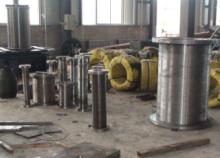

|
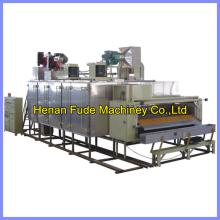
|

|
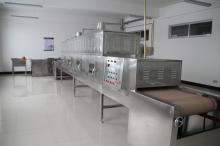
|

|
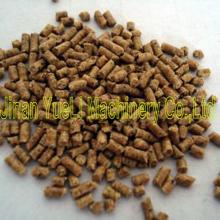
|
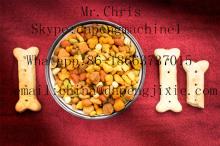
|
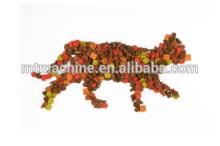
|
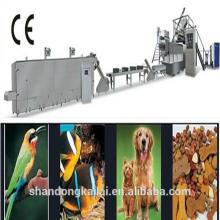
|
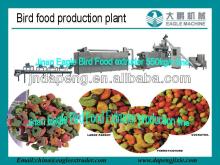
|
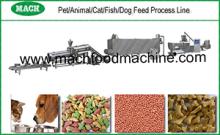
|
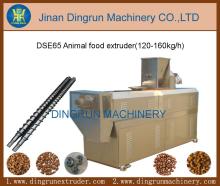
|